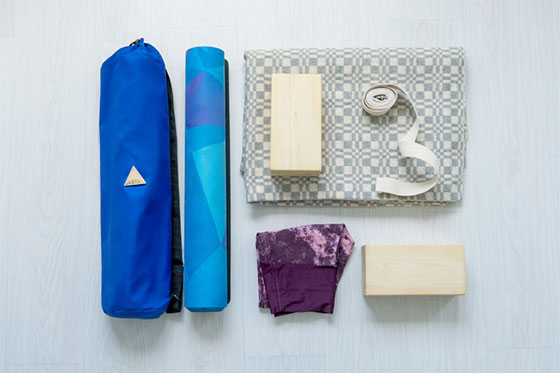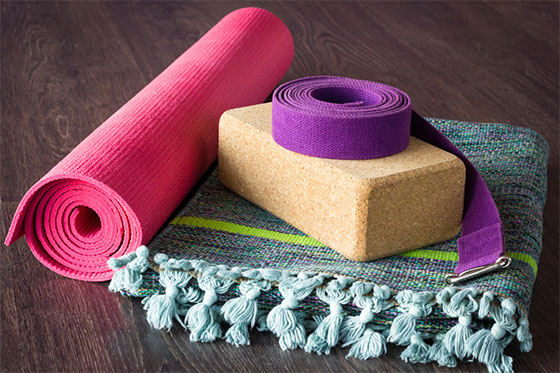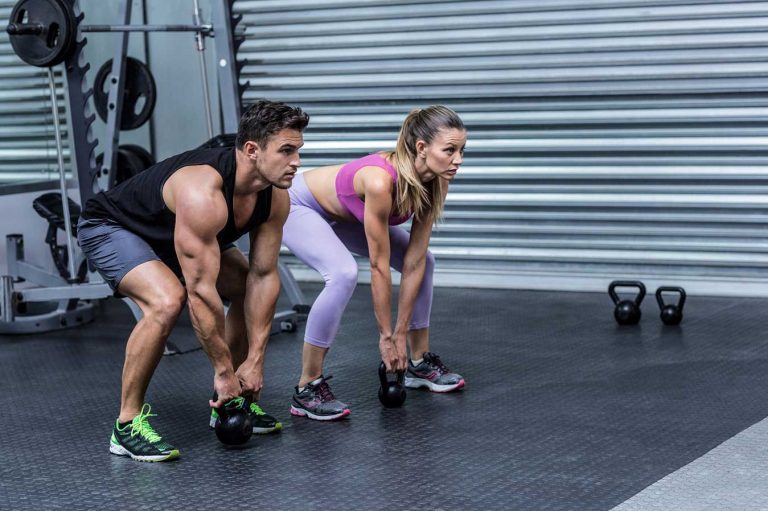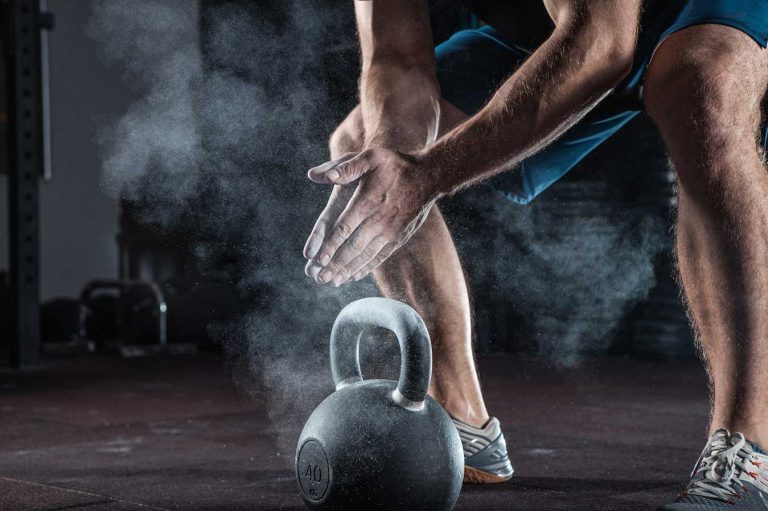You only need a few simple things to get started with yoga. Even though yoga studios usually provide yoga props for use in classes, it is still a good idea to get your own yoga props if you want to do yoga at home.
What is a Yoga Prop?
A yoga prop is anything that helps you do an asana better. Using a prop may be a great way for people with less flexibility or balance or just starting yoga to practice poses that would be hard to do without. Using a yoga prop also lets you stay in a pose much longer.
9 Types of Yoga Props and their Uses

1. Yoga Mat
Most yoga studios will provide you with a yoga mat as a yoga prop. Use them to support your weight and grip the floor as you strike a pose. Though you may often find mats for rent at yoga studios, it’s recommended that you invest in your own.
In trendy yoga as exercise, practitioners use specially designed “yoga mats” to keep their hands and feet from injury by sliding on the floor. It is very important to practice on a yoga mat, especially if your floor is concrete or hard. You will need a yoga mat especially if you have a concrete floor or hard floor in your home.
Your yoga mats provide a solid surface on which to do your postures and are easily transportable and stored when not in use. Another consideration is whether or not your mat is eco-friendly. All of these characteristics of your mat are influenced by its design, from its thickness to its material to its surface roughness.
2. Yoga Wheel
A yoga wheel helps with a lot of different asanas and exercises that are similar to yoga. Yoga wheels are becoming increasingly popular because they stretch and relax the back, neck, and shoulder muscles and deep hip flexors. They are also used for balance poses that are hard to hold.
This yoga prop makes arm balances or backbends that are hard to do easier. People say the main benefits are getting rid of stress and building flexibility. They can also help with balance, body awareness, and core strength. Yoga wheels come in different sizes to fit people of different heights and to help people stretch deeper.
Yoga wheels are a new kind of yoga prop used in many ways. They are available in different sizes, depending on what you want to use them for.
3. Yoga Sandbags
Sandbags are great tools to use in yoga. These big guys love to help you feel supported and rooted in yin and restorative yoga. Under their firm but gentle weight, sandbags can help loosen tight muscles, calm nervous energy, and give a sense of security to emotions.
The bag’s fabric is generally defined with an anti-shedding agent to prevent the escape of dust and other particles. Yoga sandbags are useful for anyone, from seasoned athletes to newcomers, who want to improve their health and fitness.
This yoga prop is used in any yoga to add more weight to your routine and get results faster. Yoga sandbags add weight for a deeper stretch when placed between the thighs, especially in Virasana and other poses. Also, when the sandbag is put on a certain body part, it makes the person more aware of it.
4. Yoga Blocks
This rectangular yoga prop is made from thick foam. It serves as a support for many yoga postures. A yoga block is a prop used to aid in stabilizing a pose and increasing its range of motion for yogis of varying strengths and flexibility.
If you’re starting yoga, you may find the poses’ emphasis on twisting, bending, and folding a challenge. Using yoga blocks is crucial to achieving proper form in the various poses. In addition, the use of yoga blocks makes it possible to perform the poses more safely and effectively.
The use of yoga blocks is appropriate for yogis of all experience levels. Yoga blocks are great for beginners since they are used to alter more advanced poses to make them more manageable. The deeper stretch is beneficial for more experienced yogis. Multiple blocks help yogis maintain their alignment in more challenging asanas, such as the splits.

5. Yoga Straps or Yoga Belts
Yoga straps are a popular and helpful yoga prop that can be useful to yogis. One of the most common applications of a yoga strap is to help achieve and maintain difficult poses that would otherwise be unattainable. Yoga straps are ideal for Iyengar yoga because they help preserve perfect alignment.
Yoga straps are composed of non-elastic cotton or nylon and are available in various colors. The standard length is six feet, although eight to ten feet are available for persons with larger legs. Numerous straps feature a buckle or D-ring at one end. It makes you create a loop and utilize the strap in various ways.
When one hand cannot reach the other or a foot gripped is too far away, these props are frequently utilized for bound poses. Other applications include straps for restorative poses and heart openers for tight shoulders.
6. Yoga Bolsters
A yoga bolster is a yoga prop used during asana practice to aid the yogi in various ways, including providing support for the body and ensuring that the posture is held in the correct alignment. A bolster is a long, thick pillow or cushion, typically with a removable cover for easy cleaning. Bolsters can be cylindrical or rectangular. The standard size is between 22 and 26 inches in length and seven to nine inches in diameter.
With the help of a yoga bolster, a yogi can rest their body and let the muscles unwind passively. Seated or reclining postures ease the strain and allow the yogi to go deeper in the pose.
The bolster can be a seat cushion to help you sit straight. Cross your legs and rest your pelvis on the bolster’s short edge, so it almost tilts. This guarantees that your pelvis will shift forward alongside your spine.
7. Yoga Blanket
Some forms of yoga can use a blanket as a yoga prop for added comfort and support. As such, they can assist the yoga student in locating a more optimal or at least more tolerable alignment for the pose. In addition, students can use yoga blankets as part of the general practice or as a cover-up during periods of stillness.
Since Iyengar and yin yoga depends heavily on yoga props to support the body, yoga blankets are frequently used in these classes. Although any blanket will do, you can also buy specially made yoga blankets that are often made of natural fabrics and come in various weights.
This yoga prop is useful for plank and cat/cow poses, which require using the bones for support. Similarly to a bolster or yoga block, a yoga blanket can serve as a yoga prop. To get the most blanket and comfort from a blanket, roll it up tightly.
8. Yoga Socks
Yoga socks are specialized footwear meant to enhance a practitioner’s grip on the floor or a yoga mat, resulting in better balance and posture. Numerous variants and designs are typically available. But the soles of nearly all footwear feature some tackiness or grip.
You can find yoga socks of varying lengths, but most cover the foot. Sometimes, yoga socks are long, reaching down to the wearer’s ankles or calves. But, again, it’s up to you to determine what looks best on you. Consider trying on a few different lengths before settling on one.
Yoga is primarily comprised of balancing exercises and movements. Therefore, keep non-slip yoga socks or yoga grip socks handy. The material that covers the soles of this yoga prop provides much grip on the floor. However, if you wear yoga socks while you practice, you will find that you are more steady in your movements.
9. Yoga Knee Pads
To provide support and cushioning for the knees and lower legs during yoga practice, practitioners often use a wide insert of mat material. This low-cost but highly effective yoga prop reduces tension and discomfort during yoga flows. As with any yoga prop, a knee pad’s thickness depends on the practitioner. Knee mats that are half an inch or an inch thick offer sufficient comfort and padding. The patella experiences fewer friction thanks to the plastic knee cap’s ability to swivel and slide.
The dual purpose of yoga knee pads is to protect your knees and provide comfort while kneeling. A high-quality yoga knee pad and a nomad’s spirit will allow you to practice yoga whenever and wherever you like without worrying about potential harm to your knees or other joints.
With yoga knee pads, you’ll be more mobile, increasing your options for yoga practice. You should do yoga on a variety of surfaces, both indoors and out, but ultimately you should pick one that feels good to you. The pad must always be thin and small to transport easily. The straps on some yoga knee pads make them convenient to transport.

What are the benefits of yoga props?
Both beginners and advanced practitioners can benefit from using props in yoga. Here are the major benefits of yoga props below.
- Facilitates the personalization of the practice
- Deepens breathing and relaxes the body
- Reduces stress and anxiety
- Provides an opportunity for experimentation
- It allows the recipient to apply feedback to their day-to-day lives
- Assists in aligning the body
- Provides you with a sense of true comfort
Conclusion
To help increase productivity during their practice, many yoga enthusiasts don’t consider using props. Consequently, some people are unaware of the many benefits of using yoga props. Having learned about some great yoga props in this article now is the time to choose the one that will suit your needs.
FAQs
Why are props used in yoga?
Yoga props assist stiff bodies in relaxing into a new pose. They achieve positions that damaged, tight, or unstretched bodies can’t. Props can assist you in understanding the position and building flexibility and strength.
What props are used in yin yoga?
In Yin Yoga, blankets can replace a regular yoga mat in the posture known as Snail.
Are Yoga blocks necessary?
There is no need to use blocks in yoga. However, yoga instructors often suggest or require students to use one or two blocks.
Can I use a towel as a yoga blanket?
Any comfortable and dense blanket will work regardless of the blanket you choose for yoga practice. For some poses, a towel will also work.



